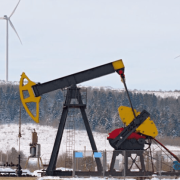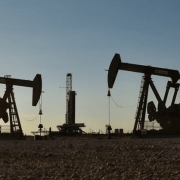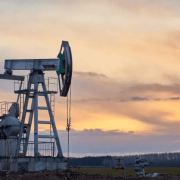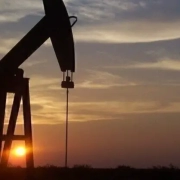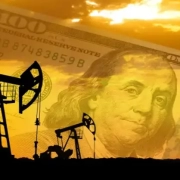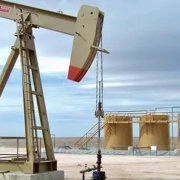⚠️ IMPORTANT LEGAL DISCLAIMER:
The information provided on this page is for general informational purposes only and does not constitute legal, financial, or investment advice. Oil and gas laws, mineral rights regulations, and royalty structures vary significantly by state and jurisdiction. While we strive to provide accurate and up-to-date information, no guarantee is made to that effect, and laws may have changed since publication.
You should consult with a licensed attorney specializing in oil and gas law in your jurisdiction, a qualified financial advisor, or other appropriate professionals before making any decisions based on this material. Neither the author nor the publisher assumes any liability for actions taken in reliance upon the information contained herein.
The energy sector is undergoing a transformative shift as the world moves toward more sustainable and environmentally responsible practices. While fossil fuels like oil and gas continue to play a crucial role in global energy production, the rise of renewable energy sources presents an opportunity to create hybrid energy models that blend traditional and emerging technologies. For landowners and energy developers alike, combining renewable energy installations with existing oil and gas leases offers a promising strategy for maximizing land use, diversifying income, and promoting long-term sustainability.
This comprehensive guide explores how hybrid energy models are reshaping the energy landscape, the legal and operational considerations involved, and how stakeholders can benefit from integrating renewables with oil and gas assets.
Understanding the Concept of Hybrid Energy Models
Hybrid energy models refer to the strategic integration of multiple energy sources on the same tract of land or within the same operational framework. In the context of oil and gas leases, this typically means co-locating renewable energy systems—such as solar panels, wind turbines, or battery storage units—on land that is already leased or utilized for fossil fuel extraction.
These models aim to optimize land productivity, increase energy output, and reduce the overall environmental footprint of energy development. They also align with broader policy goals aimed at transitioning to a low-carbon economy while maintaining energy reliability and economic viability.
Land Use Optimization and Dual Revenue Streams
One of the most compelling advantages of hybrid models is the ability to generate multiple revenue streams from the same parcel of land. For landowners, this represents a significant financial opportunity. Oil and gas leases typically occupy only a portion of the surface area, leaving room for solar or wind installations.
By allowing renewable energy companies to install infrastructure on unused or underutilized sections of leased land, landowners can collect lease payments or royalties from both fossil fuel extraction and renewable energy production. This diversified income strategy reduces reliance on a single energy market and provides financial stability, especially in times of oil price volatility.
In agricultural or rural areas, hybrid models also help preserve open land use while supporting energy independence and job creation. Co-locating renewables can enhance the overall productivity and value of the land without significantly disrupting existing oil and gas operations.
Technical Compatibility and Site Considerations
Implementing a hybrid energy model requires careful assessment of technical and logistical compatibility between renewable systems and fossil fuel infrastructure. Not all oil and gas sites are suitable for solar or wind installations, and thorough feasibility studies are essential.
Factors to consider include:
- Sunlight exposure and wind patterns for renewable energy efficiency
- Topography and land slope for equipment installation
- Proximity to transmission lines or grid access points
- Safety protocols to avoid interference between energy systems
Solar panels, for example, can often be installed in cleared or graded areas near well pads, while wind turbines require greater setbacks and spatial planning. Battery storage systems can be used to balance intermittent renewable output and ensure steady power availability.
Integrating different energy sources must also account for environmental impact, maintenance logistics, and emergency access. Coordination between oil and gas operators and renewable developers is critical to maintaining site integrity and operational efficiency.
Legal Framework and Lease Structuring
From a legal standpoint, combining renewable energy with oil and gas leases involves navigating complex land use rights and contractual obligations. Traditional mineral leases often grant surface usage rights to energy companies, which may conflict with the installation of solar or wind infrastructure.
To implement a hybrid model, landowners and energy developers must clearly delineate surface rights, operational zones, and access routes. This often requires amendments to existing lease agreements or the creation of separate renewable energy leases that define terms such as:
- Compensation and royalty structures
- Duration and termination clauses
- Environmental responsibilities
- Liability and indemnity provisions
- Easement and access rights
Consulting with attorneys who specialize in energy law ensures that all parties are protected and that the hybrid model is legally enforceable. Careful lease structuring can also prevent future disputes and ensure that both energy systems can coexist without legal conflicts.
Environmental and Regulatory Considerations
Hybrid energy models align with evolving regulatory frameworks that promote environmental stewardship and carbon reduction. Many federal, state, and local governments offer incentives for renewable energy development, including tax credits, grants, and expedited permitting processes.
Combining renewables with oil and gas operations can help energy companies meet sustainability targets and demonstrate environmental responsibility. This is particularly relevant as stakeholders—including investors, regulators, and consumers—increasingly prioritize environmental, social, and governance (ESG) metrics.
However, dual energy use must comply with all applicable environmental regulations. Permitting requirements for renewable installations vary by jurisdiction and may involve additional assessments for land use, wildlife protection, and water management. Integrating these processes with existing oil and gas compliance measures requires coordination and regulatory expertise.
Financial Benefits and Risk Mitigation
Hybrid models provide a hedge against market fluctuations by diversifying energy output and revenue sources. While oil and gas prices can be highly volatile, renewable energy offers more predictable long-term returns due to fixed-rate power purchase agreements and declining technology costs.
This financial stability is especially valuable for landowners and investors seeking reliable income. In times of low oil prices or production downturns, revenue from solar or wind installations can provide a steady cash flow. Conversely, when oil prices are high, royalties from fossil fuel extraction may take precedence.
Insurance and risk management are also important considerations. Energy projects carry various operational, environmental, and liability risks. Developing a comprehensive insurance strategy that covers both renewable and fossil fuel components helps protect assets and ensures continuity.
Innovative Technologies and Integrated Energy Solutions
Advancements in energy technology are making hybrid models more feasible and efficient. Smart grid systems, remote monitoring, and automation tools enable seamless coordination between energy sources and allow for real-time optimization of production and distribution.
Battery storage technologies play a critical role in bridging the gap between intermittent renewable generation and constant energy demand. Storing excess solar or wind power for later use helps stabilize the grid and supports consistent delivery of electricity.
Microgrids and distributed energy systems also support hybrid models by enabling localized energy production and consumption. These systems enhance energy resilience, especially in remote or underserved areas, and reduce reliance on centralized power infrastructure.
Community Engagement and Public Perception
Public perception plays a significant role in the success of hybrid energy projects. Community engagement efforts that highlight the environmental and economic benefits of integrated energy systems can foster support and minimize opposition.
Landowners, developers, and operators should work collaboratively with local stakeholders to address concerns, provide transparent information, and demonstrate long-term value. Educational outreach and open forums can help communities understand the benefits of combining renewables with oil and gas operations.
In areas where fossil fuel development has been met with skepticism, integrating renewables can help improve the industry’s image and build trust. Showcasing hybrid models as part of a broader sustainability strategy aligns with public sentiment and environmental goals.
Strategic Planning and Long-Term Vision
Creating a successful hybrid energy model requires long-term strategic planning and a clear vision for energy integration. This includes setting realistic goals, identifying potential obstacles, and establishing metrics for success.
Developers and landowners should conduct comprehensive feasibility assessments, engage with experienced consultants, and create phased implementation plans. These plans should address site selection, permitting timelines, financing options, and operational logistics.
Establishing partnerships with utility companies, renewable energy firms, and technology providers can enhance project execution and expand access to funding and expertise. Collaboration across sectors is essential for building scalable, resilient, and economically viable hybrid energy systems.
Market Trends and Future Outlook
The market for hybrid energy models is expected to grow as demand for clean energy accelerates and pressure to decarbonize intensifies. Major energy companies are increasingly investing in renewable assets and seeking ways to blend traditional and modern technologies.
Policy initiatives at the national and international levels are driving innovation and encouraging public-private partnerships. As renewable technologies become more cost-effective and reliable, hybrid models will likely become standard practice in energy development.
Emerging trends such as carbon capture, hydrogen production, and green infrastructure further expand the potential of integrated energy systems. These innovations create new opportunities for synergy between oil and gas and renewable energy sectors.
Hybrid models that combine renewable energy with oil and gas leases represent a forward-looking approach to energy development. By leveraging the strengths of both sectors, these models offer a path to sustainable, diversified, and economically sound energy production.
For landowners, energy developers, and policymakers, the integration of renewables into existing fossil fuel infrastructure provides a unique opportunity to optimize land use, reduce environmental impact, and enhance energy resilience. As technology evolves and public demand for clean energy grows, hybrid models are poised to play a central role in shaping the future of the global energy landscape.
Adopting hybrid strategies requires careful planning, legal clarity, and collaborative execution. With the right tools and partnerships, stakeholders can harness the full potential of hybrid energy models to drive innovation, economic growth, and environmental sustainability.
Do you have any questions related to Hybrid Models? Feel free to contact us here.

